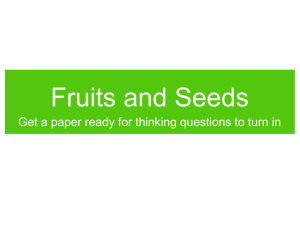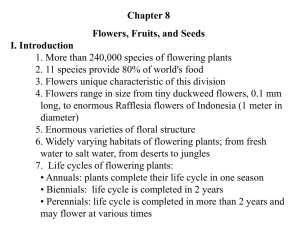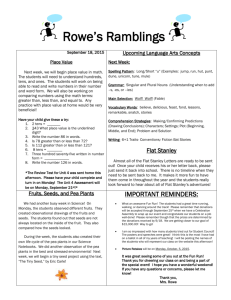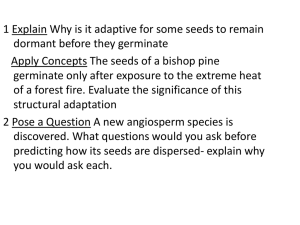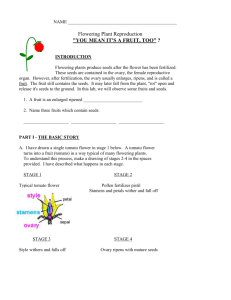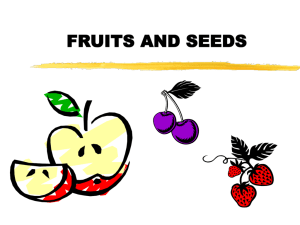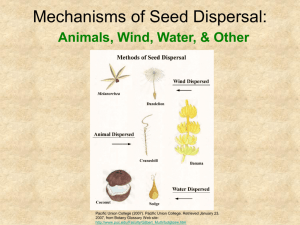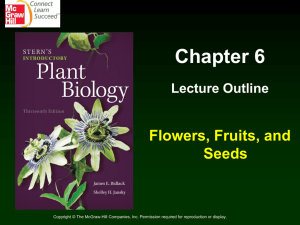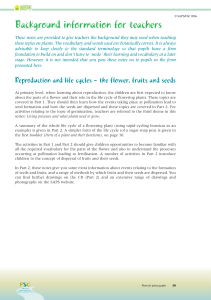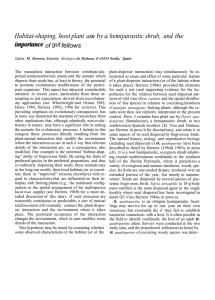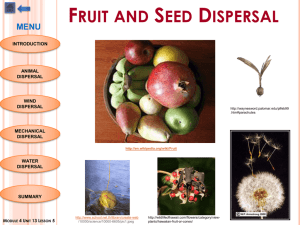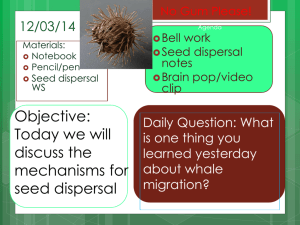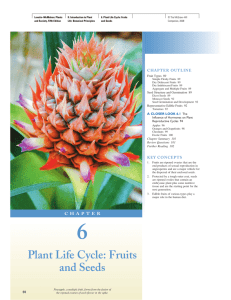Flowers, Fruits and Seeds Fruits vs. vegetables Fruit regions
advertisement
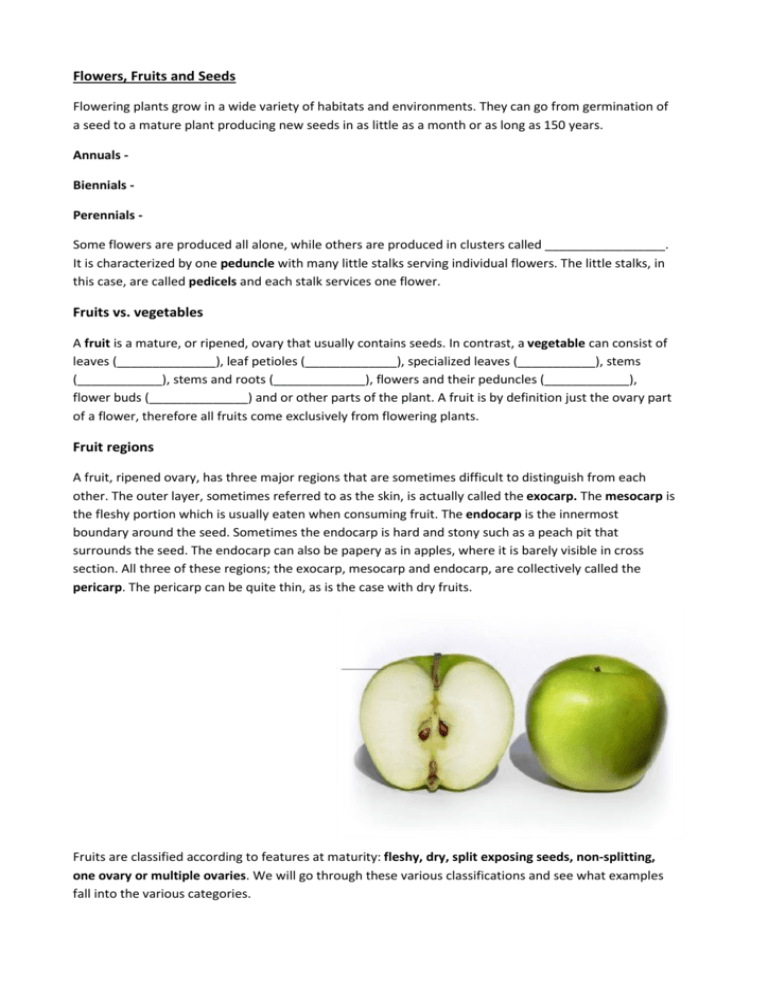
Flowers, Fruits and Seeds Flowering plants grow in a wide variety of habitats and environments. They can go from germination of a seed to a mature plant producing new seeds in as little as a month or as long as 150 years. Annuals Biennials Perennials Some flowers are produced all alone, while others are produced in clusters called _________________. It is characterized by one peduncle with many little stalks serving individual flowers. The little stalks, in this case, are called pedicels and each stalk services one flower. Fruits vs. vegetables A fruit is a mature, or ripened, ovary that usually contains seeds. In contrast, a vegetable can consist of leaves (______________), leaf petioles (_____________), specialized leaves (___________), stems (____________), stems and roots (_____________), flowers and their peduncles (____________), flower buds (______________) and or other parts of the plant. A fruit is by definition just the ovary part of a flower, therefore all fruits come exclusively from flowering plants. Fruit regions A fruit, ripened ovary, has three major regions that are sometimes difficult to distinguish from each other. The outer layer, sometimes referred to as the skin, is actually called the exocarp. The mesocarp is the fleshy portion which is usually eaten when consuming fruit. The endocarp is the innermost boundary around the seed. Sometimes the endocarp is hard and stony such as a peach pit that surrounds the seed. The endocarp can also be papery as in apples, where it is barely visible in cross section. All three of these regions; the exocarp, mesocarp and endocarp, are collectively called the pericarp. The pericarp can be quite thin, as is the case with dry fruits. Fruits are classified according to features at maturity: fleshy, dry, split exposing seeds, non-splitting, one ovary or multiple ovaries. We will go through these various classifications and see what examples fall into the various categories. Kinds of fruits Seed dispersal mechanisms There are a variety of methods that will get seeds from the ovary to a fertile spot to begin germinating and growing. Not all methods will work for every plant and some plants are very method specific. Dispersal by wind The wind can carry light seeds for miles and most seeds and fruits relying on wind dispersal have specialized adaptations. Some fruits are too large to be carried in the air, but can be rolled along by the wind. Examples: Dispersal by animals There are so many adaptations for the dispersal of seeds by animals that it would take a volume or two to discuss them all. Birds can carry seeds in the mud that they pick up on their feet. Seeds pass through digestive tracts and are deposited randomly by animals. Ants carry collect and carry seeds. Some seeds will not germinate unless they have passed through the acidic environment of a digestive tract. Fur and feathers can trap seeds and some seeds have burrowing type screws or hooks to ensure getting caught on something and carried along. Examples: Dispersal by water Some fruits contain trapped air and are thus adapted to dispersal by water. Some pericarps are thick and spongy enough to absorb water slowly and will thus protect the tiny embryo held within. Saltwater dispersed plants generally have these type pericarps and survival requires washing up on a beach somewhere before the saltwater reaches the inside of the seed. Examples: Other dispersal mechanisms Some fruits mechanically eject fruits, some at a violent velocity. Humans are another method of dispersal whether intentionally or not. Most countries have regulations with regards to bringing fruits and seeds into the country that may harm native species and cultivated crops. Examples:


